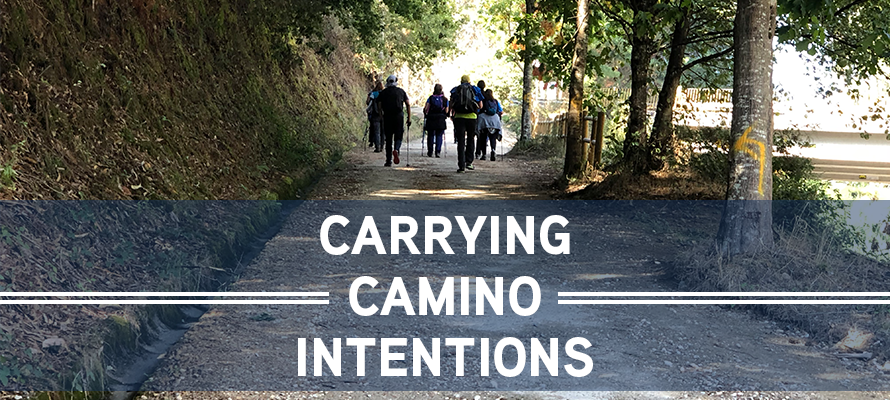
A Pilgrim’s Prayer:
O God, who brought your servant Abraham out of the land of the Chaldean’s, protecting him in his wanderings, who guided the Hebrew people across the desert, we ask that you watch over us, your servants, as we walk in the love of your name to Santiago de Compostela.
Be for us our companion on the walk,
Our guide at the crossroads,
Our breath in our weariness,
Our protection in danger,
Our albergue on the Camino,
Our shade in the heat,
Our light in the darkness,
Our consolation in our discouragements,
And our strength in our intentions.
So that with your guidance we may arrive safe and sound at the end of the Road and enriched with grace and virtue we return safely to our homes filled with joy.
In the name of Jesus Christ our Lord,
Amen.Apostle Santiago, pray for us.
Santa Maria, pray for us
While the simplest meaning of a pilgrimage is to journey closer to God, there are different ways to do so. Some pilgrims undertake a pilgrimage as an act of penance, others for a retreat experience, still others for learning about their faith or interacting with other faithful. Many pilgrims have special intentions while on pilgrimage, either offering the pilgrimage to receive answers for an intention for others or oneself or taking a pilgrimage of thanksgiving for intentions that have already been answered.
Bear one another’s burdens, and so fulfill the law of Christ.
As a pilgrimage naturally encompasses environments outside of our normal comfort zone, there are ample opportunities to “offer it up” for ourselves and for others. A pilgrimage also creates the silence and space to reevaluate one’s life and contemplate one’s spiritual journey. In addition, the beauty of the natural world or the grandeur of churches and holy sites can enkindle a sense of awe and wonder, leading to moments of praise for God and all of His works.
Carrying these prayer intentions with you along the way takes on new significance on the Camino de Santiago, where many pilgrims choose to literally carry their intentions to lay at the foot of the cross or in the tomb of St. James the Apostle. Pilgrims often write down their intentions in a book or on paper and reflect upon them each morning or at each place of rest. After arriving in Santiago, it is common practice to give thanks at the tomb of St. James, and then continue on to the coast, where many pilgrims choose to burn their papers or even their clothing, as a sign of letting go and handing it over to God.
Come to me, all you who labor and are burdened, and I will give you rest.
Along the Camino de Santiago is a monument known as the Cruz de Ferro, or the Iron Cross. Many pilgrims, especially those who began their journey in St. Jean Pied de Port – over 550km or 340 miles away, choose to leave a stone here as a memorial of their intentions and a symbol of letting go as they continue on. This stone is brought with them from their homeland and carried in a pocket or backpack as a tangible representation of their Camino intentions. The Cruz de Ferro is the highest point along the French route (the most popular route) of the Camino de Santiago and has a crude cross at its peak, surrounded by thousands of rocks and mementos from pilgrims over the years. From here, it is still 240km or 150 miles to Santiago, but the act of laying down a stone is so freeing that many pilgrims leave feeling much lighter and with renewed vigor.
Cast your burden on the Lord, and He will sustain you; he will never permit the righteous to be moved.

